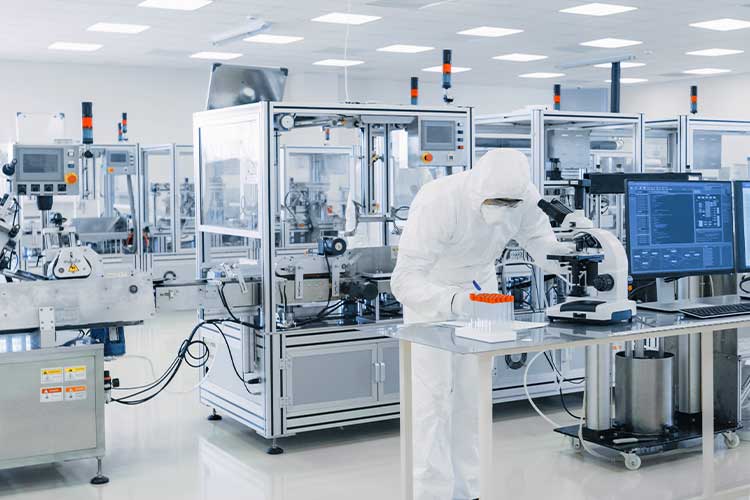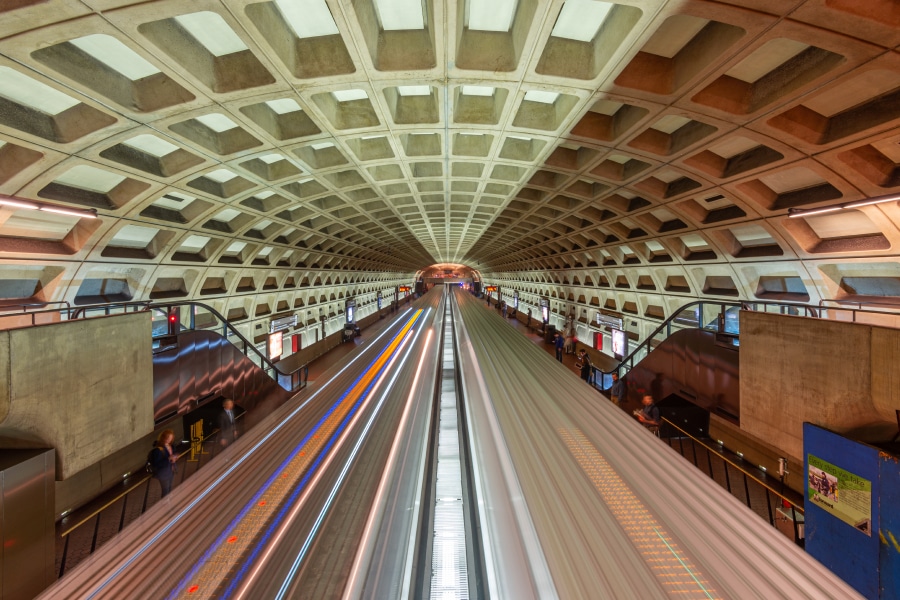As COVID-19 cases continue to increase around the world—especially in the United States, now the epicenter of the pandemic—scientists are feverishly working on the development of a long-awaited vaccine. As of this writing, some public health experts are hopeful that a vaccine could be ready for widespread use by the end of 2020, with more-cautious predictions saying it’s more likely to come in early 2021.
Critical in the distribution of a vaccine once it’s developed are the physical buildings that produce and manufacture it. Building a vaccine manufacturing facility is typically a complex and lengthy process, which is why there tend to be general contractors that specialize in the practice.
Aside from the manufacturing facility, the laboratories where vaccines are tested and developed are labeled based on their BioSafetyLevel (BSL), ranging from one to four. The higher the number, the greater the risk and, therefore, the more constraints, barriers and regulations that are involved with building and operating a laboratory. Although BSL generally doesn’t apply to the construction of a vaccine manufacturing facility, it’s relevant to functional areas of a facility based on what’s taking place in the area.
The goal of a manufacturing plant
“The goal of the construction of a vaccine manufacturing facility is to keep it clean and have nothing susceptible to contamination,” said Ryan Molen, vice president at healthcare general contractor McCarthy Building. “The facility needs to be safe, reliable and consistent.”
To reach this goal, Molen and McCarthy are not just involved in construction but are part of the vaccine manufacturing facility’s design. “You want the contractor at the table as early as possible,” said Molen, who has been in construction for nearly 30 years and has focused on multiple markets including healthcare, science, technology and industrial. “Planning should start with the end result—a successful validation process—in mind.”
Validation guidelines are set by the U.S. Food and Drug Administration (FDA). The goal of validation, as defined by the FDA, is to “establish documented evidence which provides a high degree of assurance that a specific process will consistently produce a product meeting its predetermined and quality attributes.”
The validation process follows the phased gate methodology, a project management technique where an initiative of a project is divided into distinct stages. Each phase must meet specific goals and ends with a review gate, where it is independently reviewed and evaluated. If the goals have been met, the next phase may commence.
Planning, planning, planning
The FDA is also involved with the construction methods of a facility. There are generally two approaches, with one resembling a generic warehouse and the other resembling a high-security facility. Alternatively, if the manufacturing space is connected to an existing facility or office space, it may be architecturally designed to blend in.
Either way, construction of a vaccine manufacturing facility requires a “heavy focus on upfront planning,” according to Molen. Planning begins with the development of the User Requirements Specification (URS). This is the most critical document; it defines what is to be built. What follows are functional specs and design specs, which are developed before construction begins.
“The typical facility includes a large warehouse space for shipping and receiving, clean room space for manufacturing and testing labs for quality control,” Molen said. Clean room space is efficiently designed to maximize operational needs while maintaining cost economies for initial building costs with support utilities such as air handlers and chiller systems. Support offices are typically located in either a different wing of the building or elsewhere on campus.
When McCarthy builds a facility for manufacturing vaccines, the contractor will “build the facility before we build it,” Molen said. “We use design tools and do virtual mockups to look for coordination issues and to ensure everything will fit,” Molen said, “and even do physical mockups if something is especially complex.”
When developing a facility for manufacturing vaccines, consideration must be given to the flow of materials and manpower. Materials that cross flow could potentially cause contamination. Similarly, manpower that is dealing with material at one point during production needs to be isolated from other parts of production, also due to potential contamination.
Other areas that need to be considered in vaccine manufacturing facility design include the facility’s humidity, air pressure, temperature and air ventilation. The wrong temperature of a facility could ruin a batch of medicine. Despite the temperature concerns, facilities are not located in any particular part of the country. However, they are commonly located near major research universities where they are supported by grants or in state capital cities where they receive government support.
Specialty subcontractors are needed for security systems that monitor every room and require badges for individuals to access rooms. In addition, specialty contractors are needed for systems such as water for injection (WFI) skid and loop either by reverse osmosis or distillation.
Finally, each piece of equipment goes through a rigorous validation process known as installation qualification, operational qualification and performance/product qualification (IQOQPQ). This represents quality-assurance protocols for each phase of the manufacturing process for pharmaceutical equipment.
Careful timeframe
Ordinarily, the timeframe from determining requirement specs to when manufacturing takes place is a years-long process. Of course, size and complexity of the project impact the timeframe. Other time drivers include original project scoping, procurement for and long lead items for things such as specialized HVAC equipment, control systems and coatings or finishes.
This would seemingly make it impossible to mass produce a COVID-19 vaccine by the end of 2020, which the government maintains is possible. “From what I’ve read, the process is being sped up and facility construction is starting before a vaccine is even finalized,” Molen said.
A desire to go quickly is actually standard when building vaccine manufacturing facilities. “Speed-to-market is always important in this market from a revenue standpoint for the company and for the consumer, who is anxiously awaiting medicine,” Molen said. “The process is reliable as long as development is following critical steps, and I trust the agencies who oversee the process have robust procedures in place to ensure consumer safety.”
The speed that is being put into developing and manufacturing a COVID-19 vaccine is sure to have long- term implications. “It’s impossible to not learn from the efficiencies and utilize them in the development of future pharmaceuticals and the facilities that manufacture them,” Molen said.











